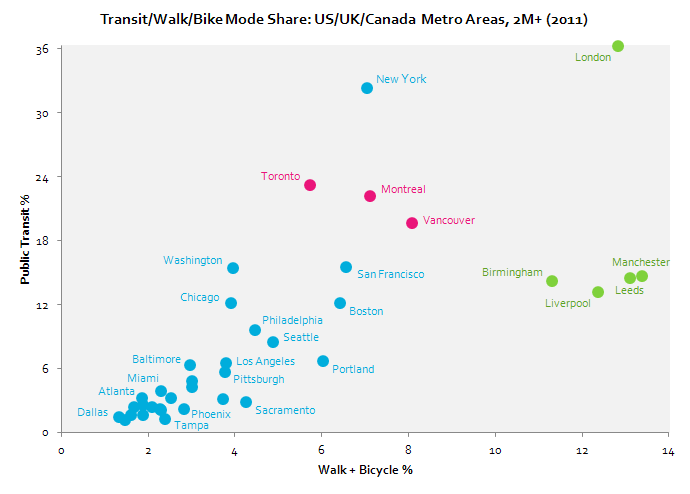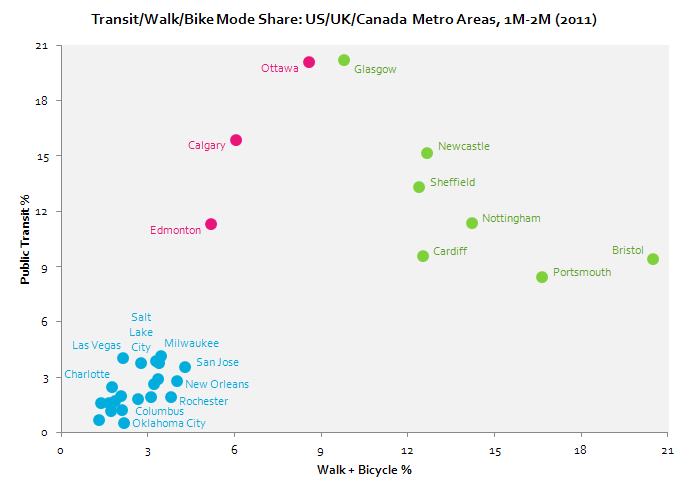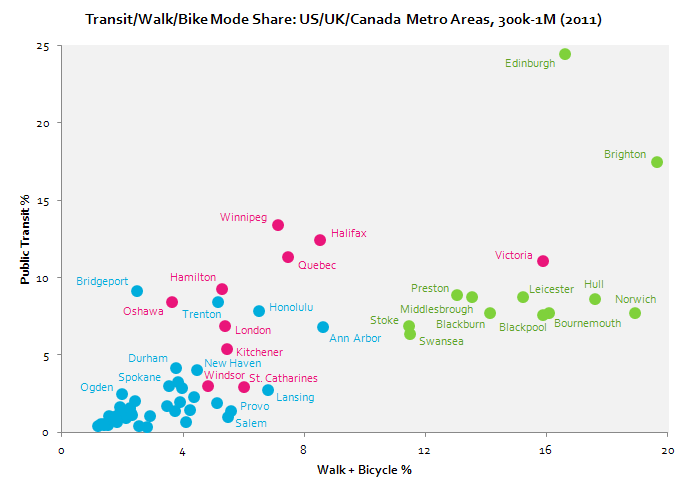High frequency is kinda overrated a lot. Toronto buses didn't start at 3-4 minutes frequencies on day one like they are now. They started at 30 minutes off-peak and 20 minutes peak hour and the higher frequencies are a later product of higher ridership. After all, high frequency is a feature of rapid transit, another way to increase capacity to deal with increasing ridership.
Reducing gaps between buses are important as I said, so that's not just gaps between bus routes, but also the gaps between the individual buses on each route. But even tripling the buses and operators to increase frequency from 15 minutes to 5 minutes for example would only reduce average wait time by 5 minutes, from possibly a 50 minutes trip. What requires more effort, waiting in one spot for an extra 5 minutes, or walking an extra 5 minutes to the bus stop? I would say 5 minutes walking makes more difference, and that means smaller gaps between routes, filling in those gaps.
Walkability to transit is definitely overlooked in US cities and suburbs compared to those of Canada, but if you compare Canada to UK, you can see how lower walkability can also force more people onto transit, and that is why Canadian cities have higher transit ridership than UK cities. After all, transit isn't just competing with the car, but also with cycling and walking, and arguably transit is more akin to the car in terms of travel distance. Despite their transit ridership, Canadian cities arguably more akin to US cities than to UK cities. High transit ridership can be just as much a product of sprawl as high car dependence. Canadian cities have used this sprawl, this lack of walkability, to get people onto transit, and US cities can too.
Of course, you can see increasing density and walkability due to high transit ridership in certain places and corridors within Canadian cities, but like high frequencies that density and walkability is arguably more a product of high transit ridership than the other way around. Don't be so quick to attribute higher ridership to different culture, maybe the culture is a product of the transit system too. You can see the car-oriented culture in Canada in these graphs, the lack of walkability compared to UK, how higher walkability hurts transit ridership in UK. Car vs. transit is not such a black vs. white issue, not as opposite of each other as you might think, and so people and cities of Canada and US not as different as you might think either.






